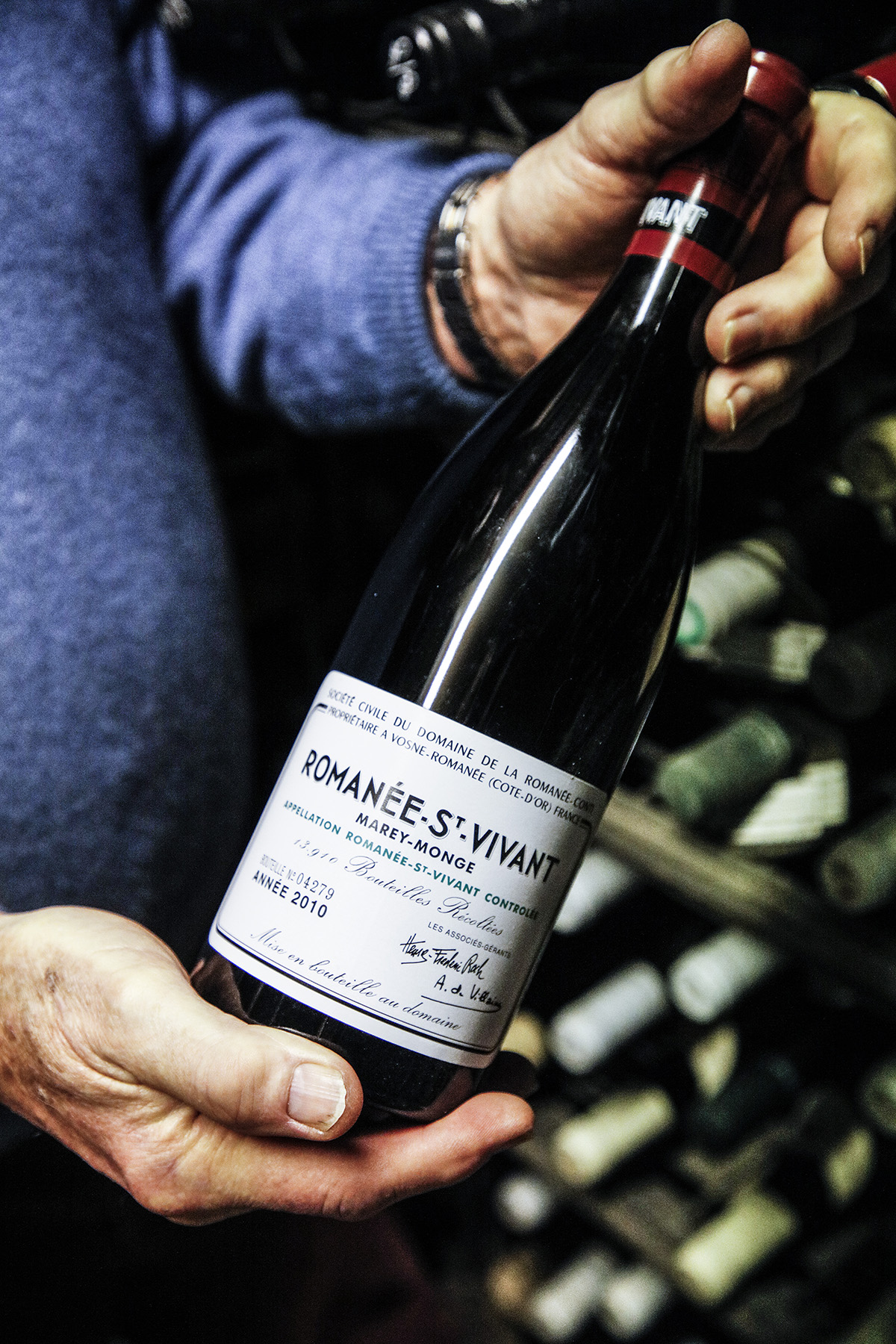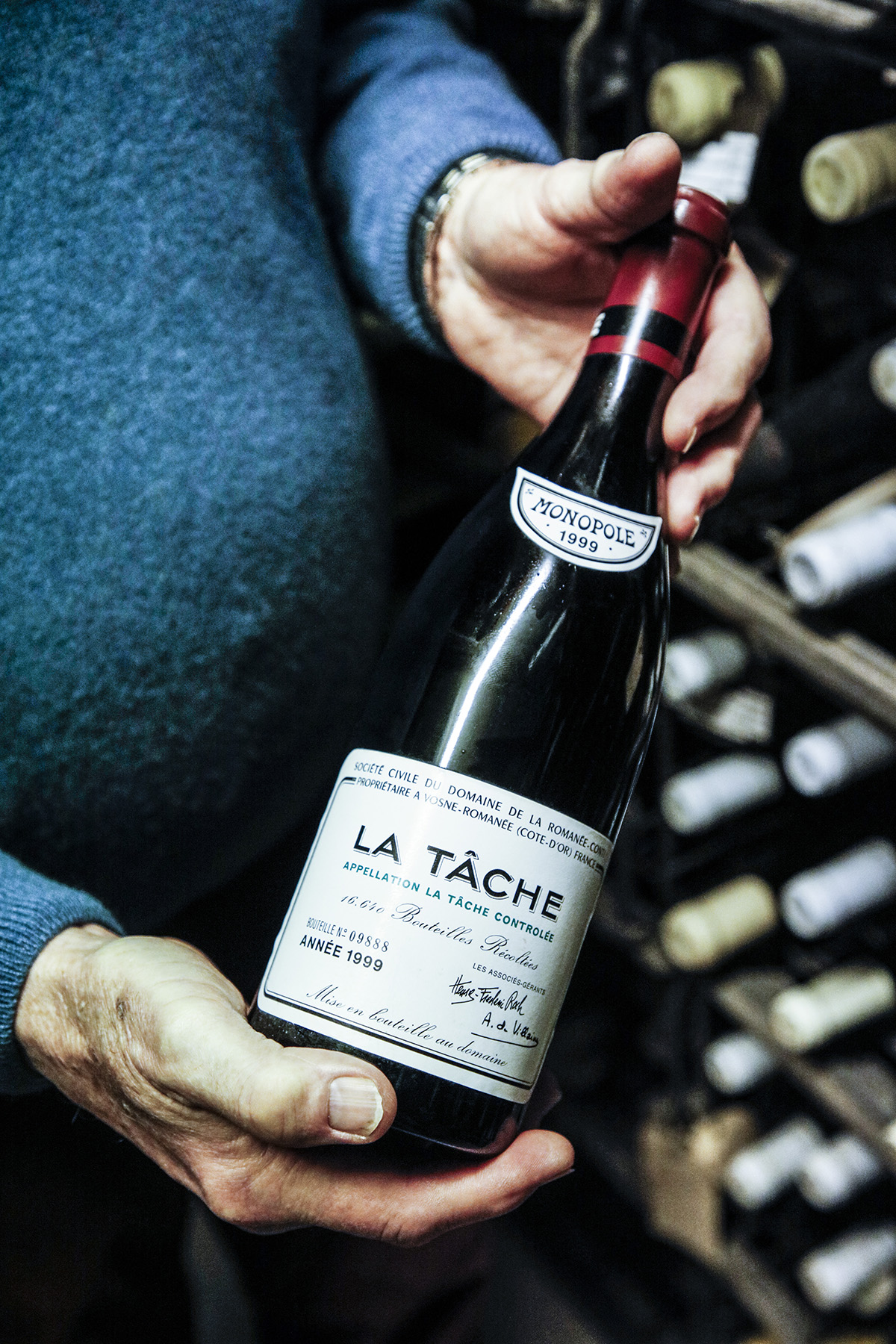James Halliday’s DRC Guide
James Halliday’s DRC Guide
To coincide with the James Halliday Collection auctions series, James has provided his guide to Domaine de la Romanée-Conti written for the 19th Len Evans Tutorial in 2019. This is a comprehensive guide to Burgundy’s and the world’s most lauded wine, known as DRC. Explore Langton's Burgundy Portfolio.
In this excerpt from his guide, James Halliday discusses each of the six core holdings of Domaine de la Romanée-Conti: Echézeaux, Grands-Echézeaux, Romanée-Saint-Vivant, Richebourg, La Tâche, and Romanée-Conti.
Echézeaux
In blind tastings such as you the scholars will be confronted with on Friday, Echézeaux can often be mistaken for one of the greater vineyards when young because of its seductively floral bouquet, and sweet fruit palate. It is one of the largest Grand Crus in Burgundy, upslope from the highest point of Vougeot, and abutting Chambolle-Musigny on the north. DRC’s holding is far larger than that of any other owner; there are 84 proprietors, over 60 with holdings with less than 0.18 hectares. DRC’s 4.67 hectares is situated in the Lieu-dit of Le Poulellières. It is the second most northerly part of Echézeaux, abutting Grands-Echézeaux on its eastern boundary. Clive Coates suggests the soils are thin, Remington Norman says that they are deep. As with Clos Vougeot, some parts are far better than others, and the holding of DRC is in one of the best sections of Echézeaux.
Grands-Echézeaux
Lying, as it does, between Le Poulellières and Clos Vougeot, Clive Coates ventures into one of his rare excursions to coherently discuss flavour and structure, so I shall quote him. ‘Grands-Echézeaux is a richer, more structured wine [than Echézeaux] with greater intensity and definition and a black fruit, gamey flavour: rustic in the best sense. It can be firm, even hard in its youth, less obviously generous than either Echézeaux or the more refined Grand Crus of Vosne Romanée.’
Once again, Domaine de la Romanée-Conti is by far the largest proprietor, owning more than one-third of the vineyard. There are 21 proprietors, half owning less than 0.13 hectares.
Each year I buy Echézeaux and Grands-Echézeaux; both have the utterly unmistakable stamp of the Domaine on them, and while I agree Grands-Echézeaux is fuller bodied than Echézeaux, the price differential and the greater elegance and earlier maturity of Echézeaux persuade me to invest in an each-way bet.
Romanée-Saint-Vivant
Romanée-Saint-Vivant was confiscated from the Abbey during the French Revolution. Most of the vineyard was acquired by Nicolas-Joseph Marey, and the Marey-Monge family (as they became) owned all but a small part of the entire property until selling a fraction under one hectare to Leroy and a fraction under half a hectare to Charles Noëllat in 1898. They retained the remainder until 1966, when the family leased it to DRC. In September 1988 the heirs of the last member of the Marey-Monge family sold the property to Domaine de la Romanée-Conti.

Once again, Domaine de la Romanée-Conti is by far the largest holder, its 5.29 hectares well over half the total area of 9.44 hectares. Since DRC became the outright owner of the property, the quality and consistency of Romanée-Saint-Vivant has improved to a point where I rank it third after Romanée-Conti and La Tâche. Indeed, in one or two recent vintages, the price ex Château was marginally in excess of that for Richebourg, the price determined purely on quality.
I am in agreement with Clive Coates where he says ‘Romanée-Saint-Vivant is the lightest, the most delicate, and the most feminine of the Vosne Grand Crus. For me there is a distinct resemblance to Musigny. At its best it is an exquisitely perfumed wine, silk where Richebourg is velvet, but no less intense, no less beautiful. While in the DRC line up the Richebourg is usually superior, elsewhere, at Leroy or Hudelot-Noëllat, this is not always the case. It is a question of personal taste.’ (An element of self-contradiction here, but that is Coates’ imprint.)
Thus it is that my hip pocket nerve means that I buy equal quantities of Echézeaux, Grands-Echézeaux, Romanée-Saint-Vivant and La Tâche each year.
Richebourg
Here, too, DRC towers over the other proprietors, its 3.51 hectares dwarfing the next largest holding of Leroy (0.78 ha); the total area of Richebourg is 8.03 hectares.
It was almost entirely owned by the monastery of Cîteaux. It was confiscated and sold during the Revolution in 1790. By 1855 there were various owners, the most important being Duvault-Blochet; it was through this ownership that DRC ultimately ended up with its holding. This was not without complication, as there were two Lieu-dits Les Richebourg and Les Véroilles-sous-Richebourg. As in the case of La Tâche and Gaudichots, the proprietors of Les Véroilles-sous-Richebourg were able to prove to the Court of Appeal in Dijon in the 1920s that their wines had been sold as Richebourg and at the same price for sufficiently long for this section to be officially included within the Grand Cru.
Having started to quote Coates, I shall continue, although I don’t share his extreme enthusiasm for Richebourg. He says, ‘It is indisputably the best of the non-monopole Grand Crus of Vosne. It is fuller, fatter, richer, more intense and generous, but more masculine and long-lasting than Romanée-Saint-Vivant. At its best, it can offer an explosion of flavours: coffee and chocolate when young, violets when mature, all within a velvet-textured cornucopia of small black and red fruits. I count some Richebourgs among the greatest Burgundies I have ever tasted.’
La Tâche
La Tâche is, of course, a monopole, entirely owned by DRC. Even in the most difficult vintages, La Tâche always manages to stamp its quality on the vintage, and, especially when young (i.e. less than 20 years old) can be preferred to Romanée-Conti by acknowledged experts. The bouquet is incredibly fragrant and spice-filled, the palate fabulously silky and supple, with enormous length and purity, driving through to the fabled peacock’s tail on the finish and aftertaste.

Its longevity is prodigious. As with Romanée-Conti, between 1982 and 1984 I methodically worked my way through all the bottles of 1938 in the cellar of La Pyramide Restaurant in Vienne, and had started in on Richebourg. On one occasion Michael Broadbent was seated nearby, and I sent him a glass of La Tâche which provoked this comment in his Great Vintage Wine Book II, ‘Variable weather conditions, frost and hail in the spring, heavy hailstorms in the summer. Vines slow to mature. Picking started October 4, but those who delayed benefitted from the autumn sun. La Tâche, clearly picked late. A warm, expansive autumnal maturity; an extraordinarily chocolatey nose, distinctly sweet on the palate, exquisite, incandescent, lingering flavour. At La Pyramide, Vienne, thanks to James Halliday at a neighbouring table. .’
The 1942 drunk on a number of occasions over the past 20 years, has always been full of life and typicité. 1962 La Tâche was handed to me by Len Evans at his then house in Greenwich, Sydney, in 1968, my first taste of DRC. It was, quite simply, electrifying, and set me on a journey of over 40 years.
Romanée-Conti
The evolution of this wine takes longer than any other of the six DRC red Burgundies. Particularly when it is young, it is easy to walk past it in a blind tasting. At a Monday Table dinner in Melbourne in August 2008 we had 11 vintages of Romanée-Conti, only one, the ’73, from a deplorable vintage. The wines were served blind in two flights, my tasting note on what turned out to be the ’73 reads ‘Brownish colour; exotic spice aromas plus forest floor; also hay straw notes suggesting some oxidation on the bouquet; laser-like penetration on the palate; goes on and on and on.’ It is the length of the wine that takes it beyond all others, Serena Sutcliffe saying it has ‘magical, virtually mystical, character – the finish of this wine, of whatever vintage, is a world unto itself.’